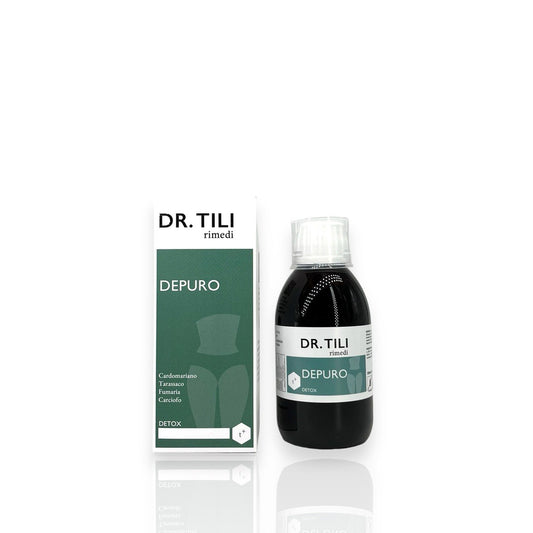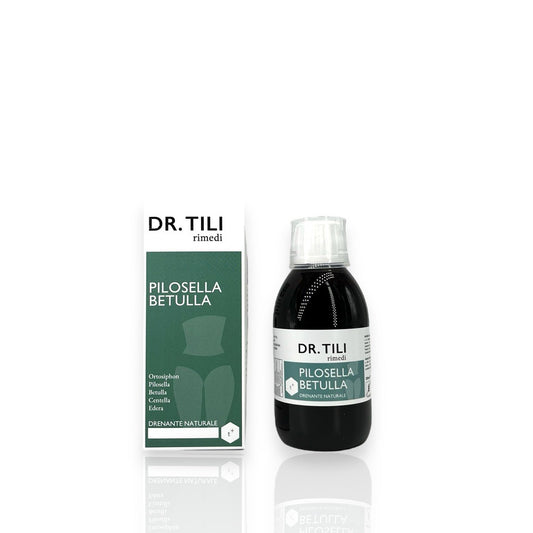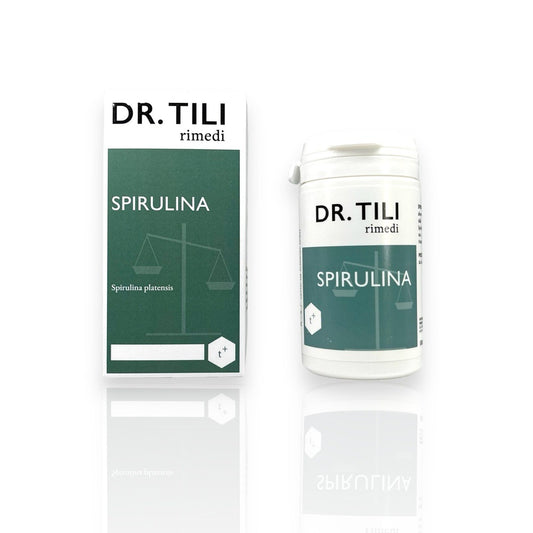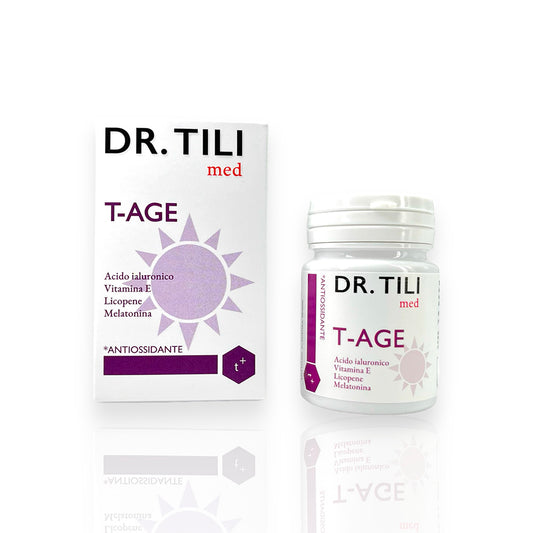ZENTIVA ITALIA Srl
ZerinoActiv Gola 8.75mg 16 tablets lemon and honey flavour
ZerinoActiv Gola 8.75mg 16 tablets lemon and honey flavour
Regular price
€10,70
Regular price
€10,70
Sale price
€10,70
Unit price
per
Tax included.
Shipping calculated at checkout.

Pickup available at Farmacia Tili
Usually ready in 24 hours
PRODUCT NET WEIGHT
PRODUCT NET WEIGHT
EAN
EAN
042814018
MINSAN
MINSAN
042814018
ZerinoActiv Gola 8.75mg 16 lemon and honey flavoured lozenges is an effective treatment for the symptomatic relief of irritative-inflammatory conditions of the oropharyngeal cavity, such as gingivitis , stomatitis and pharyngitis . Each lozenge contains flurbiprofen 8.75 mg , an active ingredient known for its anti-inflammatory and analgesic properties. The product is enriched with a pleasant lemon and honey flavour, making it more pleasant to take. ZerinoActiv Gola is formulated to dissolve slowly in the mouth, ensuring a targeted and prolonged action. The lozenges are packaged in a practical 16-unit format, ideal for convenient and discreet use. Thanks to its composition, ZerinoActiv Gola represents a targeted solution for those seeking rapid relief from throat discomfort.
Reporting of suspected adverse reactions Reporting suspected adverse reactions that occur after authorisation of the medicinal product is important. It allows continued monitoring of the benefit/risk balance of the medicinal product. Healthcare professionals are asked to report any suspected adverse reactions via the national reporting system at https://www.aifa.gov.it/content/segnalazioni-reazioni-avverse.
ACTIVE INGREDIENTS
Active ingredients contained in ZerinoActiv Gola 8.75mg 16 lemon and honey flavour lozenges - What is the active ingredient in ZerinoActiv Gola 8.75mg 16 lemon and honey flavour lozenges?
One tablet contains: Active substance: flurbiprofen 8.75 mg Excipients with known effect: glucose 1.095 g, sucrose 1.375 g. For the full list of excipients, see section 6.1.EXCIPIENTS
Composition of ZerinoActiv Gola 8.75mg 16 lemon and honey flavoured lozenges - What does ZerinoActiv Gola 8.75mg 16 lemon and honey flavoured lozenges contain?
Sucrose, glucose, macrogol, potassium hydroxide, lemon flavour, levomenthol, honey.DIRECTIONS
Therapeutic indications ZerinoActiv Gola 8.75mg 16 lemon and honey flavour lozenges - Why is ZerinoActiv Gola 8.75mg 16 lemon and honey flavour lozenges used? What is it for?
Symptomatic treatment of irritative-inflammatory conditions also associated with pain in the oropharyngeal cavity (e.g. gingivitis, stomatitis, pharyngitis).CONTRAINDICATIONS SIDE EFFECTS
Contraindications ZerinoActiv Gola 8.75mg 16 lemon and honey flavour lozenges - When should ZerinoActiv Gola 8.75mg 16 lemon and honey flavour lozenges not be used?
Do not use the medicine in children under 12 years of age. Flurbiprofen is contraindicated in patients with known hypersensitivity to flurbiprofen or to any of the excipients listed in section 6.1. Patients who have previously shown hypersensitivity reactions (e.g. asthma, urticaria, allergy, rhinitis, angioedema, bronchospasm) to ibuprofen, acetylsalicylic acid or other nonsteroidal anti-inflammatory drugs (NSAIDs). Flurbiprofen is also contraindicated in patients with a history of gastrointestinal bleeding or perforation related to previous NSAID treatment. Flurbiprofen should not be taken by patients with active or history of ulcerative colitis, Crohn's disease, recurrent peptic ulcer or gastrointestinal bleeding (defined as two or more distinct episodes of proven ulceration or bleeding). Flurbiprofen is contraindicated in patients with severe heart failure, severe hepatic failure and renal failure (see section 4.4). Third trimester of pregnancy.DOSAGE
Quantity and method of taking ZerinoActiv Gola 8.75mg 16 lemon and honey flavoured lozenges - How do you take ZerinoActiv Gola 8.75mg 16 lemon and honey flavoured lozenges?
Undesirable effects may be minimised by using the lowest effective dose for the shortest duration necessary to control symptoms (see section 4.4). Dosage Adults: 1 lozenge every 3-6 hours, as needed. Do not exceed 8 lozenges in 24 hours. Paediatric population Children over 12 years of age : as for adults. Children under 12 years of age : do not administer to children under 12 years of age (see section 4.3). Special populations Elderly : clinical data are currently limited, therefore no recommendation on posology can be made. Elderly are at increased risk of serious consequences in case of adverse reactions (see section 4.4). Patients with hepatic impairment : no dosage reduction is necessary in patients with mild to moderate hepatic impairment. Flurbiprofen is contraindicated in patients with severe hepatic impairment (see section 4.3). Patients with renal impairment : No dosage reduction is necessary in patients with mild to moderate renal impairment. Flurbiprofen is contraindicated in patients with severe renal impairment (see section 4.3). Method of administration For oropharyngeal use. Dissolve slowly in the mouth. As with all lozenges, flurbiprofen lozenges should be moved around the mouth during administration to avoid local irritation. If mouth irritation occurs, treatment should be discontinued.CONSERVATION
Storage ZerinoActiv Gola 8.75mg 16 lemon and honey flavour lozenges - How do you store ZerinoActiv Gola 8.75mg 16 lemon and honey flavour lozenges?
This medicinal product does not require any special storage conditions.WARNINGS
Warnings ZerinoActiv Gola 8.75mg 16 lemon and honey flavoured lozenges - About ZerinoActiv Gola 8.75mg 16 lemon and honey flavoured lozenges it is important to know that:
At the recommended doses, when using the medicinal product in its various pharmaceutical forms, any swallowing does not cause any harm to the patient, as the dose of flurbiprofen is much lower than that commonly used in systemic treatments. Elderly Elderly patients have an increased frequency of adverse reactions to NSAIDs, especially gastrointestinal bleeding and perforation, which may be fatal. Respiratory disorders Cases of bronchospasm have been reported with flurbiprofen in patients with a history of bronchial asthma or allergies. Flurbiprofen should be used with caution in these patients. Other NSAIDs It is advisable not to combine the medicinal product with other NSAIDs (see section 4.5). Systemic lupus erythematosus (SLE) and mixed connective tissue disease Patients with systemic lupus erythematosus and mixed connective tissue disease may be at increased risk of aseptic meningitis (see section 4.8), however this effect is not usually seen with products intended for limited and short-term use such as flurbiprofen. Cardiac, hepatic and renal impairment The medicinal product should be used with caution in patients with cardiac, renal or hepatic insufficiency. NSAIDs have been reported to cause various forms of nephrotoxicity, including interstitial nephritis, nephrotic syndrome and renal failure. Administration of an NSAID may cause a dose-dependent reduction in prostaglandin formation and precipitate renal failure. Patients at greatest risk of developing this reaction are those with impaired renal function, cardiac impairment, hepatic dysfunction, those on diuretic therapy and the elderly; however, this effect is not usually seen with products intended for limited and short-term use such as flurbiprofen. Cardiovascular and cerebrovascular effects Caution is advised before initiating treatment in patients with a history of hypertension and/or heart failure (discuss with your doctor or pharmacist), as fluid retention, hypertension and oedema have been reported in association with NSAID treatment. Clinical trial and epidemiological data suggest that use of some NSAIDs, particularly at high doses and in long-term treatment, may be associated with a small increased risk of arterial thrombotic events such as myocardial infarction or stroke. There are insufficient data to exclude a similar risk for flurbiprofen. Patients with uncontrolled hypertension, congestive heart failure, established ischaemic heart disease, peripheral arterial disease and/or cerebrovascular disease should only be treated with flurbiprofen after careful consideration. Similar consideration should be made before initiating long-term treatment in patients with risk factors for cardiovascular disease (e.g. hypertension, hyperlipidaemia, diabetes mellitus, smoking). Central nervous system effects Analgesic-induced headache. Headache may occur with prolonged or inappropriate use of analgesics and should not be treated by increasing the dose of the medicinal product. Gastrointestinal effects Flurbiprofen should be administered with caution to patients with a history of peptic ulcer and other gastrointestinal disease as these conditions may be exacerbated. The risk of gastrointestinal bleeding, ulceration or perforation is higher with increasing flurbiprofen dosage in patients with a history of ulcer, particularly if complicated with haemorrhage and perforation and in the elderly. These patients should start treatment on the lowest available dose. Gastrointestinal bleeding, ulceration or perforation have been reported with all NSAIDs at any time during treatment. These adverse reactions can be fatal and may occur with or without warning symptoms or in the presence of a previous history of serious gastrointestinal reactions. Patients with a history of gastrointestinal disease, particularly when elderly, should report any unusual abdominal symptoms (especially gastrointestinal bleeding) in the early stages of treatment. Undesirable effects may be minimised by using the lowest effective dose for the shortest duration necessary to control symptoms (see section 4.2). Caution should be advised in patients receiving concomitant medications which could increase the risk of ulceration or bleeding, such as oral corticosteroids, anticoagulants such as warfarin, selective serotonin reuptake inhibitors or anti-platelet agents such as acetylsalicylic acid (see section 4.5). When gastrointestinal bleeding or ulceration occurs in patients receiving flurbiprofen, the treatment should be discontinued. Dermatological effects Use of the medicinal product, especially if prolonged, may give rise to sensitisation or local irritation phenomena. In such cases, treatment should be discontinued and a doctor should be consulted to institute appropriate therapy if necessary. Serious skin reactions, some of them fatal, including exfoliative dermatitis, Stevens-Johnson syndrome, and toxic epidermal necrolysis, have been reported very rarely in association with the use of NSAIDs (see section 4.8). Flurbiprofen should be discontinued at the first appearance of skin rash, mucosal lesions, or any other sign of hypersensitivity. Infections Since isolated cases of exacerbation of infection-related inflammation (e.g. development of necrotising fasciitis) have been described in temporal association with systemic use of NSAIDs, patients are advised to seek immediate medical attention if signs of bacterial infection appear or worsen during flurbiprofen therapy. The possibility of initiating antibiotic therapy should be considered. If mouth irritation develops, treatment should be discontinued. Important information about some of the excipients ZERINOACTIV GOLA contains: - Glucose: patients with rare problems of glucose-galactose malabsorption should not take this medicine. - Sucrose : patients with rare hereditary problems of fructose intolerance, glucose-galactose malabsorption, or sucrase-isomaltase insufficiency should not take this medicine. Do not use for prolonged treatments beyond 7 days. If no appreciable results are noted after 3 days of treatment, the cause could be a different pathological condition. In these cases, it is advisable to consult your doctor.INTERACTIONS
Interactions ZerinoActiv Gola 8.75mg 16 lemon and honey flavour lozenges - Which medicines or foods can modify the effect of ZerinoActiv Gola 8.75mg 16 lemon and honey flavour lozenges?
Caution should be exercised in patients treated with any of the following medicinal products, as interactions have been reported in some patients. Inform your doctor if you are taking other medicinal products. Flurbiprofen should be avoided in association with: - Acetylsalicylic acid : unless low dose acetylsalicylic acid (not exceeding 100 mg/day or local prophylactic doses for cardiovascular protection) has been recommended by your doctor; as with other NSAID-containing medicinal products, concomitant administration of flurbiprofen and acetylsalicylic acid is generally not recommended due to the potential for increased adverse effects (see section 4.4). - Cox-2 inhibitors and other NSAIDs : concomitant use of other NSAIDs, including cyclooxygenase-2 selective inhibitors, should be avoided due to potential additive effects and an increased risk of adverse reactions (see section 4.4). Flurbiprofen should be used with caution in combination with: - Anticoagulants: NSAIDs may enhance the effects of anticoagulants such as warfarin (see section 4.4). - Antiplatelet agents : increased risk of gastrointestinal bleeding. - Selective serotonin reuptake inhibitors (SSRIs): increased risk of gastrointestinal bleeding. - Antihypertensives (diuretics, ACE inhibitors and angiotensin II antagonists) : NSAIDs may reduce the effect of diuretics. Other antihypertensive drugs may enhance nephrotoxicity caused by inhibition of cyclooxygenase, especially in patients with impaired renal function (these patients must be adequately hydrated). - Alcohol : may increase the risk of adverse reactions, especially bleeding in the gastrointestinal tract. - Cardiac glycosides : NSAIDs may exacerbate cardiac failure, reduce GFR (glomerular filtration rate) and increase plasma glycoside levels. - Ciclosporin : increased risk of nephrotoxicity. - Corticosteroids: increased risk of gastrointestinal ulceration or haemorrhage with NSAIDs (see section 4.4). - Lithium: there is evidence of a possible increase in lithium plasma levels. - Methotrexate : there may be an increase in methotrexate plasma levels. - Mifepristone : NSAIDs should not be used for 8-12 days after mifepristone administration, as NSAIDs may reduce the effect of mifepristone. - Quinolone antibiotics : data from animals indicate that NSAIDs may increase the risk of convulsions associated with quinolone antibiotics. Patients taking NSAIDs and quinolones may have an increased risk of developing convulsions. - Tacrolimus : possible increased risk of nephrotoxicity when NSAIDs are administered with tacrolimus. - Zidovudine : increased risk of haematological toxicity when NSAIDs are administered with zidovudine.SIDE EFFECTS
Like all medicines, ZerinoActiv Gola 8.75mg 16 lemon and honey flavour lozenges can cause side effects - What are the side effects of ZerinoActiv Gola 8.75mg 16 lemon and honey flavour lozenges?
Hypersensitivity reactions to NSAIDs have been reported and may consist of: (a) non-specific allergic reactions and anaphylaxis; (b) respiratory tract reactivity, e.g. asthma, aggravated asthma, bronchospasm, dyspnoea; (c) various skin disorders, including e.g. rashes of various types, pruritus, urticaria, purpura, angioedema and, more rarely, exfoliative and bullous dermatoses (including epidermal necrolysis and erythema multiforme). The most commonly observed adverse reactions are gastrointestinal in nature. Local use of the medicinal product, especially if prolonged, may give rise to sensitization or local irritation phenomena. Dissolution of the medicinal product in the oral cavity in the form of tablets may be accompanied by sensations of heat or tingling in the oropharynx. In such cases, treatment should be discontinued and, if necessary, appropriate therapy instituted. The following undesirable effects have been reported, particularly after administration of systemic formulations. They refer to those observed with the use of flurbiprofen used short-term and at doses compatible with the classification of over-the-counter medicines. In case of treatment of chronic conditions and for long periods of time, additional undesirable effects may occur. The undesirable effects associated with the use of flurbiprofen are divided below according to system organ class and frequency. The frequency is defined as: very common (≥ 1/10), common (≥1/100, <1/10), uncommon (≥1/1,000, <1/100), rare (≥1/10,000, <1/1,000), very rare (<1/10,000) and not known (frequency cannot be estimated from the available data). Within each frequency grouping, undesirable effects are presented in order of decreasing seriousness.| Classification by systems and organs | Frequency | Adverse reactions |
| Pathologies of the haemolymphopoietic system | Not known | Anemia, thrombocytopenia, aplastic anemia and agranulocytosis |
| Nervous system disorders | Common | Dizziness, headache, paresthesia |
| Uncommon | Drowsiness | |
| Not known | Cerebrovascular accidents, optic neuritis, migraine, confusional states, vertigo | |
| Immune system disorders | Rare | Anaphylactic reactions |
| Not known | Angioedema, hypersensitivity | |
| Eye pathologies | Not known | Visual disturbances |
| Ear and labyrinth pathologies | Not known | Tinnitus |
| Heart disease | Not known | Heart failure, edema |
| Vascular pathologies | Not known | Hypertension |
| Respiratory, thoracic and mediastinal pathologies | Common | Throat irritation |
| Uncommon | Asthma, bronchospasm and dyspnea, oropharyngeal blisters, oropharyngeal hypoesthesia | |
| Gastrointestinal disorders | Common | Diarrhoea, mouth ulcers, nausea, oral pain, oral paraesthesia, oropharyngeal pain, oral discomfort (hot or burning sensation, tingling of the mouth) |
| Uncommon | Abdominal distension, abdominal pain, constipation, dry mouth, dyspepsia, flatulence, glossodynia, dysgeusia, oral dysesthesia, vomiting | |
| Not known | Melaena, haematemesis, gastrointestinal haemorrhage, colitis, exacerbation of Crohn's disease, gastritis, peptic ulcer, gastric perforation, ulcer haemorrhage | |
| Skin and subcutaneous tissue disorders | Uncommon | Rash, itching |
| Not known | Urticaria, purpura, bullous dermatitis (including Stevens-Johnson Syndrome, Toxic Epidermal Necrolysis and Erythema Multiforme) | |
| Kidney and urinary disorders | Not known | Nephrotoxicity, tubulointerstitial nephritis and nephrotic syndrome, renal failure (as with other NSAIDs) |
| Systemic disorders and conditions related to the administration site | Uncommon | Pyrexia, pain |
| Not known | Discomfort, fatigue | |
| Hepatobiliary pathologies | Not known | Hepatitis |
| Psychiatric disorders | Uncommon | Insomnia |
| Not known | Depression, hallucination |
OVERDOSE
Overdose ZerinoActiv Gola 8.75mg 16 lemon and honey flavour lozenges - What are the risks of ZerinoActiv Gola 8.75mg 16 lemon and honey flavour lozenges in case of overdose?
In view of the low active ingredient content and its local use, overdose is unlikely to occur. Symptoms The majority of patients who ingest clinically important quantities of NSAIDs develop nausea, vomiting, gastrointestinal irritation, epigastric pain, or more rarely diarrhoea. Tinnitus, headache and gastrointestinal bleeding are also possible. In more severe cases of NSAID intoxication, central nervous system toxicity is observed, manifested by drowsiness, occasionally excitability, blurred vision and disorientation or coma. Occasionally patients develop convulsions. In severe NSAID intoxication, metabolic acidosis may occur and the prothrombin time/INR may be prolonged, probably due to interference with the action of circulating coagulation factors. Acute renal failure and liver damage may occur. An exacerbation of asthma is possible in asthmatic subjects. Treatment Treatment should be symptomatic and supportive and should include maintaining a patent airway and monitoring cardiac function and vital signs until stable. Oral administration of activated charcoal and, if necessary, correction of serum electrolytes should be considered if the patient presents within 1 hour of ingestion of a potentially toxic amount. Seizures should be treated with intravenous diazepam or lorazepam if frequent or prolonged. Bronchodilators for asthma should be administered. There is no specific antidote for flurbiprofen.PREGNANCY AND BREASTFEEDING
If you are pregnant or breast-feeding, think you may be pregnant or are planning to have a baby, ask your doctor for advice before taking ZerinoActiv Gola 8.75mg 16 lemon and honey flavour lozenges.
Pregnancy Flurbiprofen should not be administered during the first and second trimester of pregnancy unless clearly necessary. The use of flurbiprofen during the third trimester of pregnancy is contraindicated. Breastfeeding In a limited number of studies, flurbiprofen appears in breast milk at very low concentrations and is unlikely to have any adverse effects on the breast-fed infant. However, administration of flurbiprofen is not recommended in nursing mothers. Fertility There is evidence that cyclooxygenase/prostaglandin synthesis inhibitors may cause impairment of female fertility by an effect on ovulation. This is reversible upon discontinuation of treatment.DRIVING AND USE OF MACHINERY
Take ZerinoActiv Gola 8.75mg 16 lemon and honey flavour lozenges before driving or using machines - Does ZerinoActiv Gola 8.75mg 16 lemon and honey flavour lozenges affect driving or using machines?
It does not interfere with the ability to drive vehicles or use machinery.






















